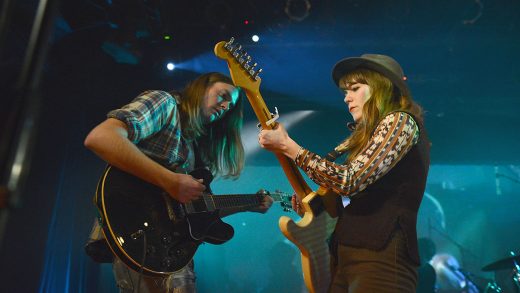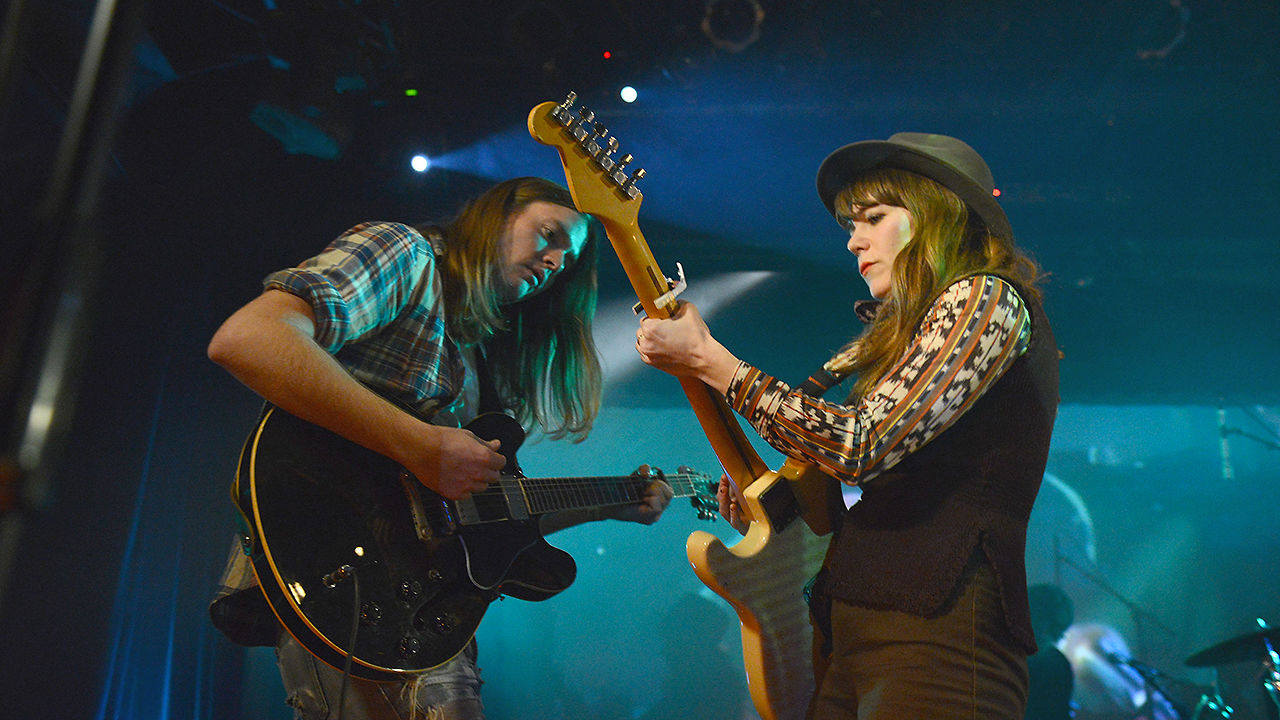How To Get Yo La Tengo To Play At Your Charity Concert
In 1992, Maccabee Montandon had just turned 21 when his big brother, Asher, was shot in L.A. by a gunman during a robbery attempt.
It’s hard to describe what an event like that does to a person. Throughout his twenties, Montandon didn’t even bother trying to process it. He went about the world in a haze, just trying to make it through each day without being utterly swallowed by grief. “I really didn’t care that much about the person who killed him,” Montandon recalls. “It was irrelevant to me. I operated with denial.”
As he entered his thirties, got married, and settled into family life, he realized that he needed to confront the tragedy or it might come back to haunt him in unforeseen ways—possibly in his relationship with his children. Montandon is a writer (full disclosure: he was my editor at Fast Company for several months before leaving to join a startup last year), so his first instinct was to write about his experiences to work through them. He published a story in Gawker that chronicled his journey—including going to the LAPD and exploring the details of his brother’s case. “It was hard, but it was also extremely cathartic and satisfying, too,” he explains.
What Do Charity Concerts Accomplish?
Writing left him wanting to do more. Every day, new stories about people getting needlessly shot were making headlines. Montandon’s friend, Josh Mills, an L.A.-based music manager and publicist, was going through a similar range of thoughts and emotions. Even though he had not personally lost anyone in the Sandy Hook shootings, the incident had left him reeling. As they chatted about all of this, Mills and Montandon started thinking about various forms of activism they could pursue and of course, this led to the question of how you even begin to chip away at a problem as immense as gun violence. They settled on throwing a charity concert called Fun Lovers Unite.
Organizing a night full of music and comedy might seem like a strange way to tackle something as dark and serious as gun violence. It seems like a soft, frivolous form of activism compared to, say, reaching out to senators or drafting a petition. But to Montandon, it felt like the perfect approach. Gun violence is one of the most hotly contested issues in America; he had no interest in getting into policy debates about second amendment rights. At the same time, it’s an issue that many people don’t like to think about at all, because the details are so grim and horrible.
In Montandon’s mind, a concert could be a small, indirect way to draw attention to the issue, to unite people around the cause and raise funds for organizations that are working hard to solve the problem. “It’s not false modesty when we say we’re doing our small part,” Montandon says. “But within that is the hope that if more of us do our small part, it could add up to something significant.”
Montandon also likes the fact that concerts are inherently fun. Throwing a concert allows him to highlight the beauty of his brother’s life, rather than the meaninglessness of his death. “It is a combination of pragmatism and passion,” he says. “I wanted to do some little thing for the cause, while celebrating my brother’s life.” After all, his brother had a huge influence on his cultural life.
“He really introduced me to comedy and music in many ways. One of my earliest memories is listening to Steve Martin’s Wild and Crazy Guy on cassette with my brother and dad. I was too young to understand many of the jokes—”Grandpa bought a rubber!”—so I looked at my dad and brother and when they laughed, I laughed. Later he got me into Mel Brooks and the Talking Heads and the Clash and Minor Threat and Led Zeppelin and then later Coen brothers and art movies…Truffaut and French New Wave movies…he loved art and people and wanted to make movies for his career,” Montandon remembers.
In November of 2014, Montandon and Mills put together a sold-out charity show called Fun Lovers Unite at a cool L.A. venue called The Echo. Montandon says that they worked hard to have big, recognizable names associated with the event—not only to get people to show up to the event, but to spark interest in the press and amplify the message. Their hard work paid off. The list of performers at the L.A. event included Jenny Lewis, Sarah Silverman, and Kurt Braunohler, among many others. All the funds went to Moms Demand Action for Gun Sense in America and Everytown for Gun Safety.
The event was so successful that they’re throwing another one next week at the Highline Ballroom in New York, with acts like Yo La Tengo, Tammy Faye Starlite, Janeane Garofalo, Josh Gondelman, and Dolly Wells and Emily Mortimer from HBO’s Doll & Em. This time, the money is going to the New York chapters of the Brady Campaign to Prevent Gun Violence and the Million Mom March.
How To Organize A Charity Concert
Having now organized two big charity concerts, Montandon has accumulated useful advice for other people who would like to throw a fundraiser of their own in an effort to create social change:
Partner with someone in the entertainment business Montandon would not have been able to pull off the event without the help of Mills, who is well connected with musicians and venues because of his work in the industry. It helps if the person you partner with also has a passion for your cause. Go through your real-life, LinkedIn, Twitter, and Facebook network—and ask your friends and family to do the same—to see if you’re connected to or can be introduced to a mutual friend who works in the music or film industries. A lot of successful and well-connected people want to support good causes, but are super busy and need someone passionate to lay the groundwork and do the legwork for an event. That someone is you.
Book your venue as early as possible Montandon points out that you can’t start asking talent to show up for an event unless you have a venue locked down. It could take time to find a venue that is willing to host an event for free, so give yourself time to find the right spot. Again, it’s all about who you know (or who people you know know): The duo were able to score New York’s infamous Highline Ballroom for their upcoming event because of Mills’s personal relationships in the industry.
Cast a wide net Before reaching out to a single person, Montandon and Mills wrote down the names of one hundred acts that they would be thrilled to see at their concert. It’s important to dream big and cast a wide net, Montandon says. You’d be surprised by how many big names you’re able to snag once you start reaching out to them.
Hit up every one you know (and their mom) The pair started chipping away at their wish list, reaching out to all their friends and asking for introductions to friends of friends who might have a connection to one of their dream performers. For instance, they were able to snag Sarah Silverman because Montandon’s wife’s childhood friend knew her well enough to make an ask. “In each case, having a personal connection worked much better than just a cold call,” Montandon says. “We learned that the hard way.”
Stay in touch with your event alumni Once a few big names signed on, others began to follow. When they got comedian Kurt Braunohler to perform at the Los Angeles event, he became a loyal Fun Lovers Unite advocate. He reached out to his network, which was vast and high-power and included Ira Kaplan from Yo La Tengo. That’s how Montandon and Mills were able to get the band to perform in this upcoming concert in New York.
Promote the heck out of it Once the event was locked down, Montandon and Mills did every thing they could possibly think of to promote it. They created a press release and sent it to news outlets. They created Facebook posts and tweeted. They created postcards that they distributed at local cafes and universities and record stores. Importantly, they leveraged the networks of the talent that was performing, asking them to tweet and reach out to other celebrities. They shamelessly tweeted at Mark Ruffalo and Amy Schumer in the hopes that they would retweet them. Sometimes it worked, and sometimes it didn’t, but the successes made it worth the effort.
Be strategic about pricing Montandon says you must think carefully about how to price your tickets. A good way to calculate the ticket price is to research how much each performer on your list charges for their own shows. Then price your ticket at about one and a half times the average, so that people still feel like they’re getting a good deal on the ticket—after all, they’re getting to see multiple acts at once.
When the big day comes, enjoy it At the L.A. event, Montandon positioned a nicely framed photograph of his brother on stage, and said a few words about his life. This was important, because it gave the audience a sense of how real the issue of gun violence really is, and how it affects real people. But it also allowed Montandon to take a minute to relish memories of his brother’s life. “My brother died so young,” he says. “But if he had lived to know Sarah Silverman, he would have had the biggest crush on her.”
Fun Lovers Unite! takes place in New York City on May 11. Tickets are available here.
Fast Company , Read Full Story
(39)














